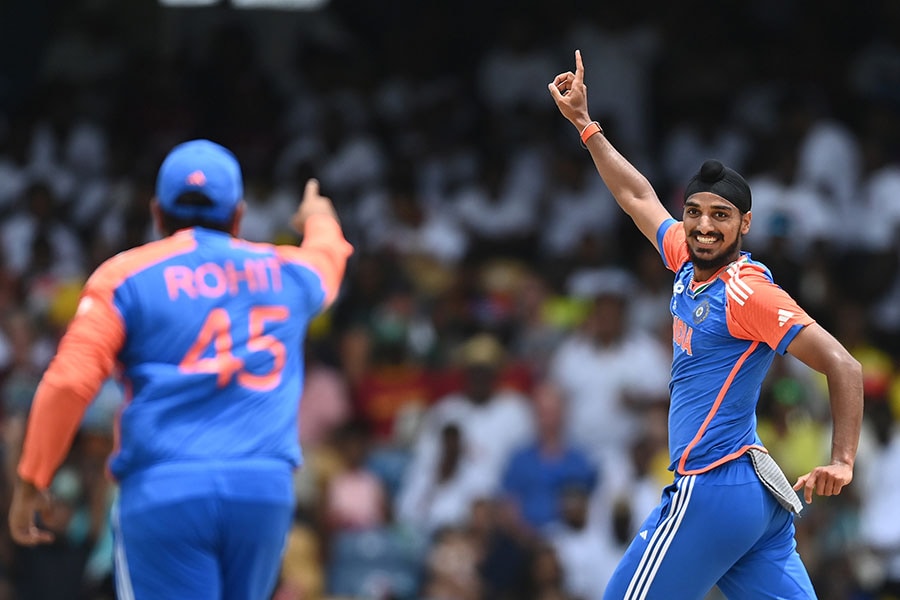I don't feel nervous bowling in the death overs: Arshdeep Singh
The joint highest wicket-taker in the recent T20 World Cup on his thoughts on bowling the crucial 19th over in the final, his learnings from Jasprit Bumrah, and Rohit Sharma's role as a bowler's captain
 Arshdeep Singh of India celebrates after dismissing Aiden Markram of South Africa during the ICC Men's T20 Cricket World Cup West Indies & USA 2024 Final match between South Africa and India at Kensington Oval on June 29, 2024 in Bridgetown, Barbados.
Image: Gareth Copley/Getty Images
Arshdeep Singh of India celebrates after dismissing Aiden Markram of South Africa during the ICC Men's T20 Cricket World Cup West Indies & USA 2024 Final match between South Africa and India at Kensington Oval on June 29, 2024 in Bridgetown, Barbados.
Image: Gareth Copley/Getty Images
The first thing that catches your eye on a Zoom call with Arshdeep Singh is an Indian jersey, with a medal hanging from its left sleeve, mounted on the wall behind him. “It’s from the 2018 Under-19 World Cup,” says Singh, from his home in Mohali.
Six years from that victory, the Singh household is again on a quest for space on the wall, for their 25-year-old son has brought home another World Cup trophy—this time, the ICC Men’s T20 World Cup.
It’s a happy headache for a cricketer who was once on the cusp of quitting and emigrating to Canada, where his brother resides. “My parents asked me to move, because I wasn’t getting too many chances in the first two years of my under-16/19 career. But I requested for a year’s time,” he says. “Of course, now they deny having said any of it,” Singh adds with an impish grin. “They have given me a free hand in my career, aur woh bhi mazaa le rahe hai—mere saath tour pe aate hai, interviews dete hai (they are enjoying touring with me and giving media interviews).”
Singh’s conviction has been vindicated, twice over, as he not only won the junior World Cup, but also became the only member of that cohort to feature in the recent T20 World Cup victory. He also ended up being the joint highest wicket-taker [17 wickets, along with Fazalhaq Farooqi of Afghanistan] in the 2024 tournament.
While the lanky left-armer bowled several crucial spells, none was perhaps more nerve-wracking than the penultimate over in the final against South Africa. With 20 runs to score in 12 balls and the explosive David Miller at the crease, the game could have swung either way—but Singh held his nerve and conceded only four, leaving Hardik Pandya a neat 16 to defend in the final over. It’s a remarkable turnaround for Singh, who was viciously trolled during the 2022 Asia Cup—including being labelled Khalistani—for having dropped a catch in the high-octane India-Pakistan clash.


















